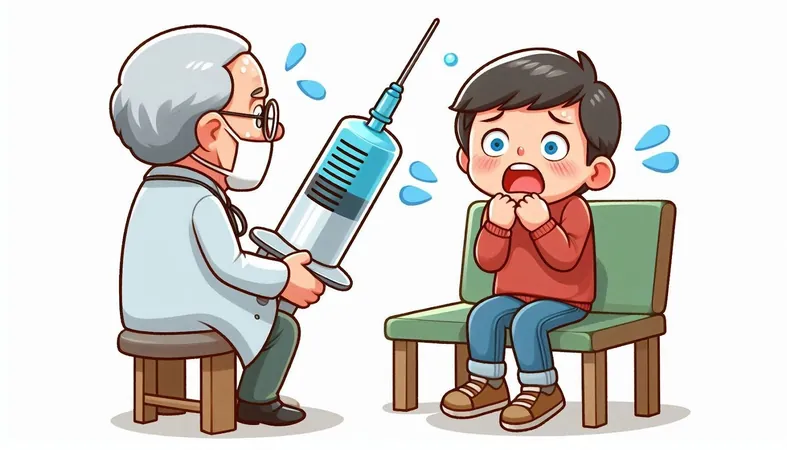
Revolutionizing Medicine: The Breakthrough of Needle-Free Shock Syringes for Pain-Free Treatments
2024-12-30
Author: Rajesh
Introduction
For decades, needles have been the conventional method for administering medication, but the discomfort associated with them often leads to anxiety and avoidance of necessary treatments. This is especially true for children and individuals requiring frequent injections, such as those with diabetes, who may face heightened stress.
The Shock Syringe Innovation
However, groundbreaking research from a team led by Prof. Viren Menezes at the Indian Institute of Technology Bombay (IIT Bombay) has given birth to the shock syringe—a device that promises to make medical injections painless. This innovative device utilizes high-energy shock waves that can penetrate the skin without the need for needles. Their study, published in the Journal of Biomedical Materials & Devices, demonstrates the shock syringe's effectiveness compared to traditional needles in laboratory animal tests.
Operating Principles
The shock syringe operates on principles similar to those behind a sonic boom, using compressed air to generate rapid waves that create a microjet of medication. Unlike standard syringes, which can cause trauma as they penetrate the skin, the shock syringe injects medicine almost instantaneously, with a speed nearly double that of a commercial airplane at takeoff. Most patients reported feeling little to no discomfort during the process.
Research Insights
Ms. Priyanka Hankare, the lead author and research scholar, emphasized the importance of minimizing tissue damage and ensuring precise delivery by continuously monitoring the pressure within the device. The shock syringe features a nozzle that's just 125 micrometers wide—comparable to a human hair—designed specifically to reduce pain while maintaining the necessary force for effective drug administration.
Efficacy Testing
The efficacy of this method was put to the test with various medications, including a local anesthetic and an antifungal. When testing the shock syringe on rats, researchers found that it not only matched the performance of traditional needles but, in some cases, delivered drugs more effectively. For instance, when administering insulin to diabetic rats, the shock syringe maintained lower blood sugar levels for a more extended period, demonstrating its potential to enhance diabetes management significantly.
Healing Benefits
Furthermore, tissue analysis indicated that the shock syringe inflicted less damage overall, leading to faster healing times at injection sites—a promising indicator for patient comfort and recovery.
Broader Implications
Looking beyond individual treatments, the implications of the shock syringe are vast. This device could speed up vaccination campaigns, benefiting children who dread needles while mitigating the risk of bloodborne diseases associated with needle mishaps. Additionally, it is capable of delivering over 1,000 injections before requiring nozzle replacement, making it a reliable and cost-effective option in the long run.
Future Considerations
Despite the encouraging results, experts caution that the future success of shock syringes shall depend on continued innovations toward human application, acquiring necessary regulatory approvals, and ensuring the device remains affordable and accessible to a broad population.
Conclusion
This revolutionary approach to injectable medications received substantial support from the HDFC ERGO—IIT Bombay Innovation Lab, reflecting a successful partnership emphasizing groundbreaking healthcare solutions. In a world increasingly focused on patient comfort, the needle-free shock syringe represents a significant leap forward in modern medicine, paving the way for a future where medical treatments can be administered swiftly, safely, and pain-free. Is the era of painless medical treatments upon us? Stay tuned for more updates!



 Brasil (PT)
Brasil (PT)
 Canada (EN)
Canada (EN)
 Chile (ES)
Chile (ES)
 Česko (CS)
Česko (CS)
 대한민국 (KO)
대한민국 (KO)
 España (ES)
España (ES)
 France (FR)
France (FR)
 Hong Kong (EN)
Hong Kong (EN)
 Italia (IT)
Italia (IT)
 日本 (JA)
日本 (JA)
 Magyarország (HU)
Magyarország (HU)
 Norge (NO)
Norge (NO)
 Polska (PL)
Polska (PL)
 Schweiz (DE)
Schweiz (DE)
 Singapore (EN)
Singapore (EN)
 Sverige (SV)
Sverige (SV)
 Suomi (FI)
Suomi (FI)
 Türkiye (TR)
Türkiye (TR)
 الإمارات العربية المتحدة (AR)
الإمارات العربية المتحدة (AR)